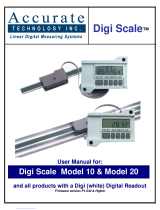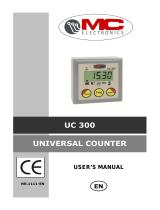
The DC coils in the frequency converters produce a high
power factor, which minimizes the imposed load on the
mains supply.
Target position
The nal target position specied by positioning
commands. The prole generator uses this position to
calculate the speed prole.
Commanded position
The actual position reference calculated by the prole
generator. The frequency converter uses the commanded
position as setpoint for position PI.
Actual position
The actual position from an encoder, or a value that the
motor control calculates in open loop. The frequency
converter uses the actual position as feedback for position
PI.
Position error
Position error is the dierence between the actual position
and the commanded position. The position error is the
input for the position PI controller.
Position unit
The physical unit for position values.
1.4
Safety
WARNING
HIGH VOLTAGE
Frequency converters contain high voltage when
connected to AC mains input, DC supply, or load sharing.
Failure to perform installation, start-up, and maintenance
by qualied personnel can result in death or serious
injury.
•
Only qualied personnel must perform instal-
lation, start-up, and maintenance.
•
Before performing any service or repair work,
use an appropriate voltage measuring device to
make sure that there is no remaining voltage on
the frequency converter.
Safety regulations
•
Disconnect mains supply to the frequency
converter whenever repair work is to be carried
out. Check that the mains supply has been
disconnected and that the necessary time has
elapsed before removing motor and mains supply
plugs. For information about the discharge time,
see Table 1.3.
•
[O] does not disconnect the mains supply and
must not be used as a safety switch.
•
Ground the equipment properly, protect the user
against supply voltage, and protect the motor
against overload in accordance with applicable
national and local regulations.
•
The ground leakage current exceeds 3.5 mA.
Ensure correct grounding of the equipment by a
certied electrical installer.
•
Do not remove the plugs for the motor and
mains supply while the frequency converter is
connected to mains. Check that the mains supply
has been disconnected and that the necessary
time has elapsed before removing motor and
mains plugs.
•
The frequency converter has more voltage
sources than L1, L2, and L3, when load sharing
(linking of DC intermediate circuit) or external
24 V DC is installed. Check that all voltage
sources have been disconnected and that the
necessary time has elapsed before commencing
repair work. For information about the discharge
time, see Table 1.3.
WARNING
UNINTENDED START
When the frequency converter is connected to AC mains,
DC supply, or load sharing, the motor may start at any
time. Unintended start during programming, service, or
repair work can result in death, serious injury, or
property damage. The motor can start via an external
switch, a eldbus command, an input reference signal
from the LCP, or after a cleared fault condition.
To prevent unintended motor start:
•
Disconnect the frequency converter from the
mains.
•
Press [O/Reset] on the LCP before
programming parameters.
•
Completely wire and assemble the frequency
converter, motor, and any driven equipment
before connecting the frequency converter to
AC mains, DC supply, or load sharing.
Introduction Programming Guide
MG33MP02 Danfoss A/S © 10/2018 All rights reserved. 7
1 1
























